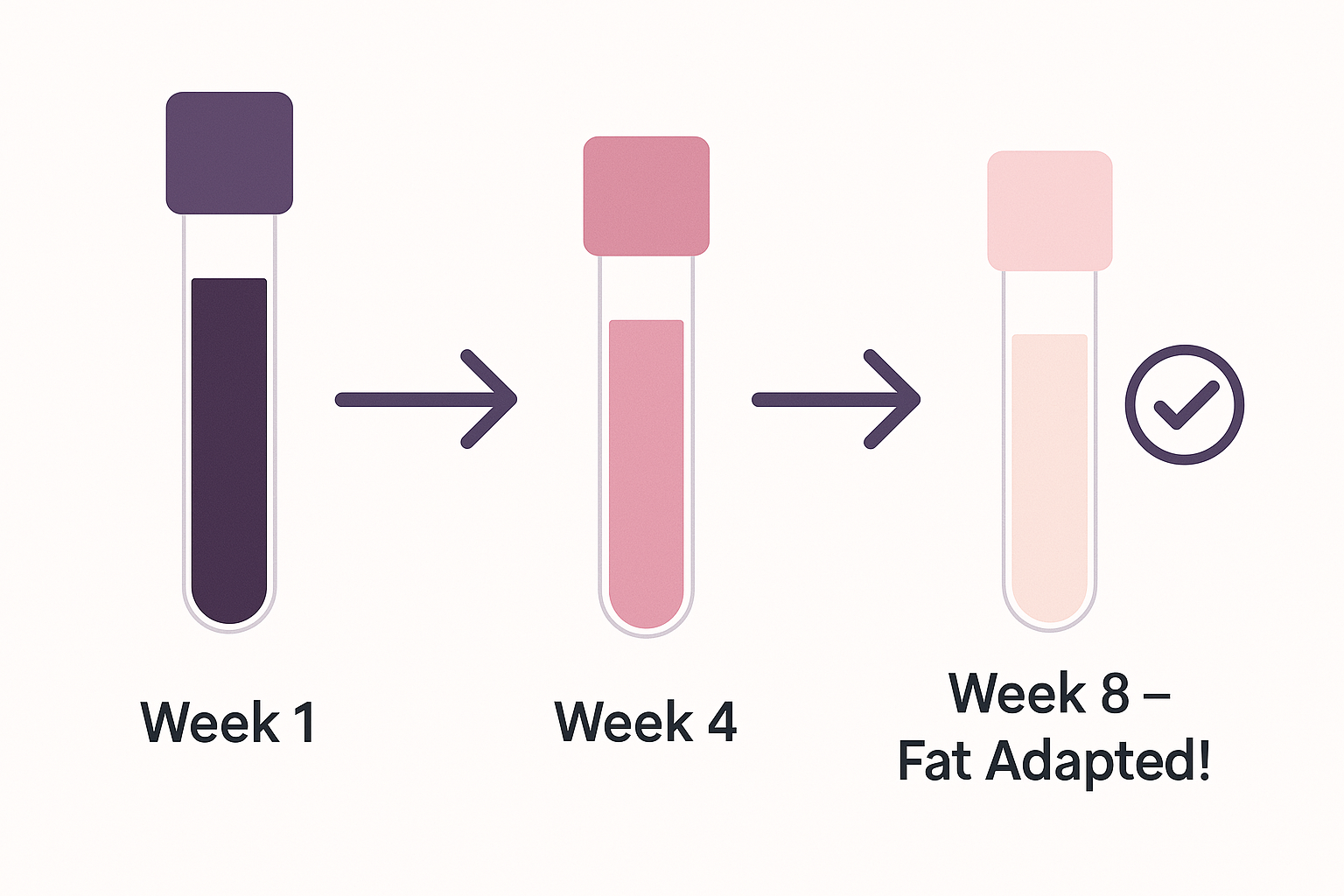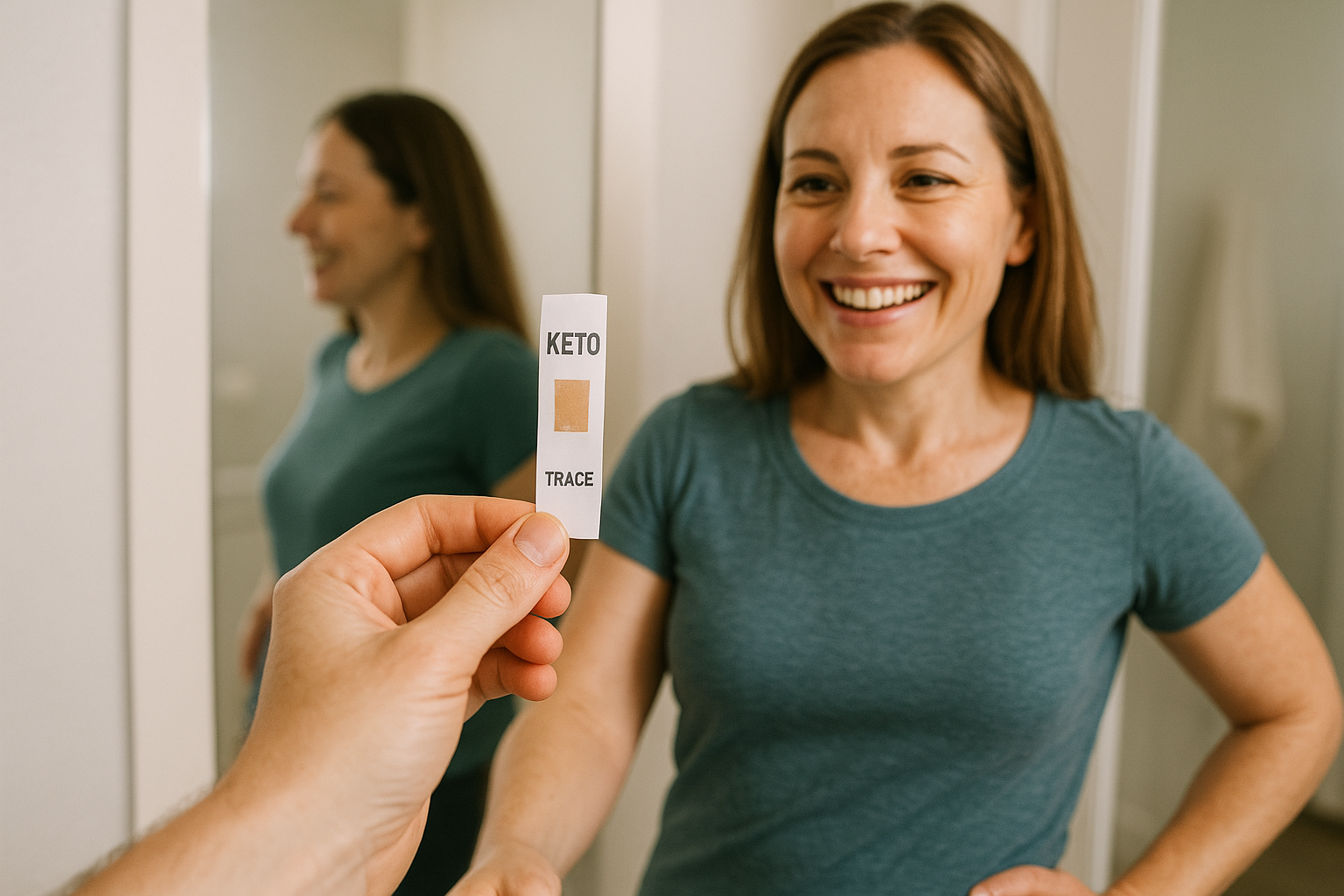So, you've started keto, bought some urine test strips, dipped one, and now you're staring at a little colored square next to labels like "Trace," "Small," or maybe just "KET." What does KET mean on a urine test? And what does that color really tell you?
Don't worry, you're not alone in wondering! Understanding these simple strips is a common first step for keto beginners. Let's break down what you're seeing.
KET = Ketones (Specifically, Acetoacetate)
Simply put, KET on a urine test strip stands for Ketones. More specifically, these strips primarily detect a type of ketone body called Acetoacetate (AcAc).
When your body starts breaking down fat for energy due to carbohydrate restriction (hello, keto!), it produces three main types of ketone bodies:
- Acetoacetate (AcAc): One of the first ketones produced. Excess AcAc is often spilled into the urine, especially early on.
- Beta-hydroxybutyrate (BHB): The main ketone used by your body and brain for fuel. It circulates primarily in the blood.
- Acetone: A less abundant ketone, mostly released through breath (which is what breath analyzers measure).
Urine strips react with the Acetoacetate present in your urine.
How to Read Keto Urine Strips
Using keto test strips is straightforward:
- Collect Urine: Either mid-stream or in a clean cup.
- Dip the Strip: Briefly immerse the reagent pad end of the strip into the urine (follow package directions, usually just 1-2 seconds).
- Tap Off Excess: Gently tap the edge of the strip against the container rim.
- Wait: Lay the strip flat and wait the specified time (typically 15-60 seconds).
- Compare: Hold the strip pad next to the color chart on the bottle and match the color.
Interpreting the Color Chart
The colors typically range from beige/light pink (negative or trace) to darker shades of pink and purple (small, moderate, large amounts of ketones).
- Negative/Trace (Beige/Light Pink): Little to no detectable AcAc in the urine. This is expected before starting keto or if you've consumed too many carbs.
- Small to Moderate (Pink Shades): Indicates the presence of ketones. You are likely in nutritional ketosis.
- Large (Dark Purple): Indicates a higher concentration of AcAc in the urine.
Important Caveat: Darker purple does NOT necessarily mean "better" ketosis or faster fat loss!
Why Urine Strip Readings Can Be Misleading (Especially Long-Term)
While helpful initially, urine strips have limitations:
- They Measure Waste Ketones: As your body becomes more "fat-adapted" (usually after several weeks or months), it gets more efficient at using ketones (AcAc and BHB) for energy. Less excess AcAc is spilled into the urine.
- Fading Colors: It's very common for urine strips to show lighter readings (or even negative) after you've been keto-adapted for a while, even if your blood ketone levels (BHB) are optimal. This doesn't mean you're out of ketosis; it means your body is using ketones efficiently.
 Urine strip readings often decrease as your body becomes more fat-adapted.
Urine strip readings often decrease as your body becomes more fat-adapted. - Hydration Levels: Dehydration concentrates urine, potentially leading to a darker purple reading even if blood ketones aren't very high. Conversely, drinking a lot of water can dilute urine and lead to a lighter reading.
- Time of Day: Ketone levels fluctuate naturally throughout the day.
So, Are Urine Strips Useless?
Not at all! They are:
- Great for Beginners: An inexpensive way to confirm you've successfully restricted carbs enough to start producing some ketones in the first few days/weeks. Seeing that color change can be very motivating!
- Useful for Quick Checks: Can sometimes help identify if a specific meal unexpectedly kicked you out of ketosis (often due to hidden carbs), though results might lag.
Just don't rely on them for:
- Measuring the depth of ketosis long-term.
- Comparing your level of ketosis to others.
- Assuming lighter colors mean you're "doing keto wrong" after adaptation.
Focus on How You Feel & Other Results
Once you're past the initial phase, pay more attention to other signs of ketosis and fat adaptation:
- Sustained energy levels
- Reduced hunger and cravings
- Improved mental clarity
- Weight loss (if that's your goal)
- Clothes fitting better
- Improved health markers (blood sugar, etc.)
 Focus on overall progress and how you feel, not just the strip color.
Focus on overall progress and how you feel, not just the strip color.
If you need more precise, long-term tracking, consider investing in a blood ketone meter, which measures BHB directly. (See our Keto Testing Guide for a comparison of methods).
In summary, KET on a urine test means ketones (Acetoacetate) are present. It's a useful indicator when starting out, but understand its limitations as your body adapts.
